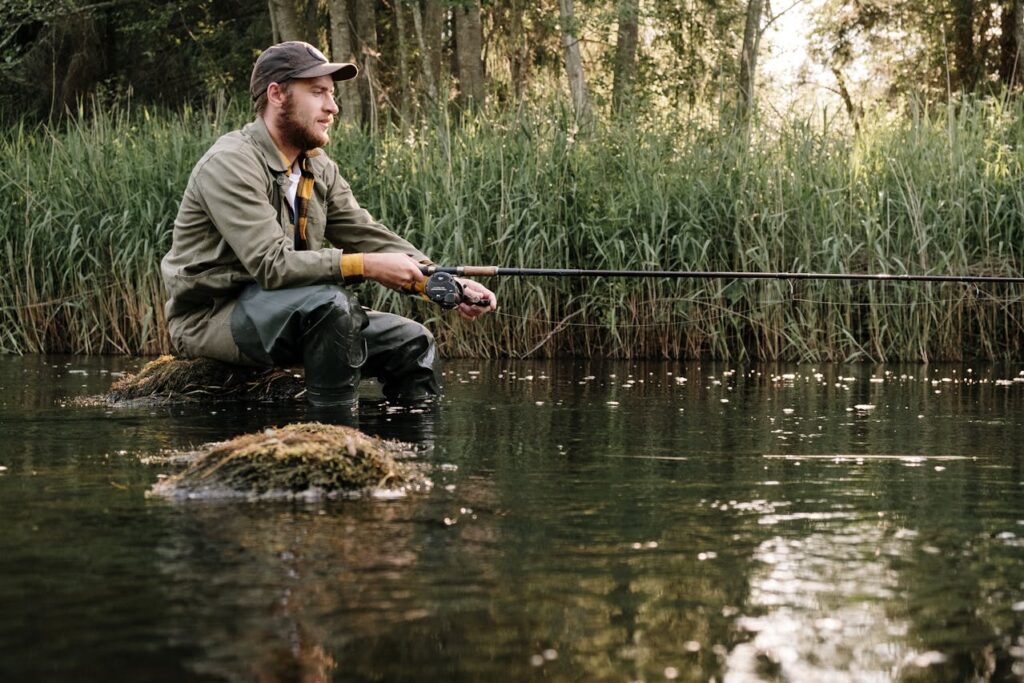Largemouth bass, known for their aggressive strikes and fighting ability, are among the most sought-after game fish in North America. Understanding the habitat preferences of largemouth bass is crucial for successful angling. In this article, we delve into the various aspects of largemouth bass habitat, including their preferred environments, feeding habits, and interactions with other species in the ecosystem.
Preferred Habitat of Largemouth Bass

Largemouth bass are predominantly found in freshwater bodies such as lakes, reservoirs, ponds, rivers, and streams. They are generally associated with aquatic vegetation, fallen trees, submerged logs, rock piles, and other structures that offer cover and ambush points. These structures provide largemouth bass with shelter from predators and allow them to stage ambushes on their prey. Additionally, largemouth bass prefer clear water conditions with adequate oxygen levels for optimal survival.
Largemouth Bass Feeding Habits
Largemouth bass are opportunistic feeders and primarily prey on smaller fish, crayfish, frogs, insects, and other aquatic organisms. They are visual predators and rely on sight to locate and strike at their prey. Understanding the forage base in a particular body of water can help anglers select the most effective bait and lures for targeting largemouth bass.
Best Live Bait for Largemouth Bass

Live bait is a popular choice among anglers targeting largemouth bass. Common live baits for largemouth bass include minnows, shad, shiners, nightcrawlers, and crayfish. These natural baits mimic the prey items that largemouth bass feed on in their natural habitat, increasing the chances of a successful catch. When using live bait, it is important to present it in a natural and enticing manner to entice largemouth bass to strike.
Stick Bait for Bass: A Popular Lure Choice
Stick baits, also known as soft plastic stick worms, are a popular lure choice for anglers targeting largemouth bass. These slender, elongated lures closely resemble the shape and movement of baitfish, making them highly effective in enticing strikes from bass. When rigged weightless or with a Texas rig, stick baits exhibit a natural, wiggling action that is irresistible to largemouth bass in various habitat types.
Bass Lure Selection Chart
A bass lure selection chart can be a valuable tool for anglers looking to optimize their lure choices based on water conditions, time of year, and bass behavior. The chart categorizes lures according to their characteristics and recommended fishing scenarios, allowing anglers to make informed decisions when selecting the most appropriate lure for targeting largemouth bass in different habitats.
Newest Bass Lures: Innovations in Bass Fishing
The fishing industry continuously introduces new bass lures and innovations to cater to the evolving preferences of anglers and the feeding behaviors of bass. From vibrating jigs and swimbaits to finesse worms and topwater lures, the newest bass lures offer a diverse range of options for anglers to experiment with in their pursuit of largemouth bass. Staying updated on the latest bass lures can enhance angling success and keep the experience fresh and exciting.
Best Bank Fishing Lures for Largemouth Bass

Bank fishing, or shore fishing, is a popular angling method for targeting largemouth bass from the shoreline. When selecting lures for bank fishing, anglers should consider the structure and cover present along the bank, as well as the depth and clarity of the water. Topwater lures, spinnerbaits, crankbaits, and soft plastics are among the best bank fishing lures for enticing largemouth bass in shallow to moderate depths.
Largemouth Bass Predators: Interaction in the Ecosystem
While largemouth bass are apex predators in their habitat, they also face predation from other species, including birds of prey, otters, turtles, and larger fish such as pike and muskie. Understanding the predator-prey dynamics in the ecosystem is integral to maintaining a balanced fish population and ecosystem health. Largemouth bass play a vital role in controlling smaller fish populations and contributing to the overall biodiversity of freshwater environments.
In conclusion, the habitat preferences of largemouth bass play a crucial role in determining their behavior, feeding habits, and angling success. By understanding the key elements of largemouth bass habitat, anglers can enhance their fishing strategies and conservation efforts to promote the sustainability of this iconic game fish in freshwater ecosystems.